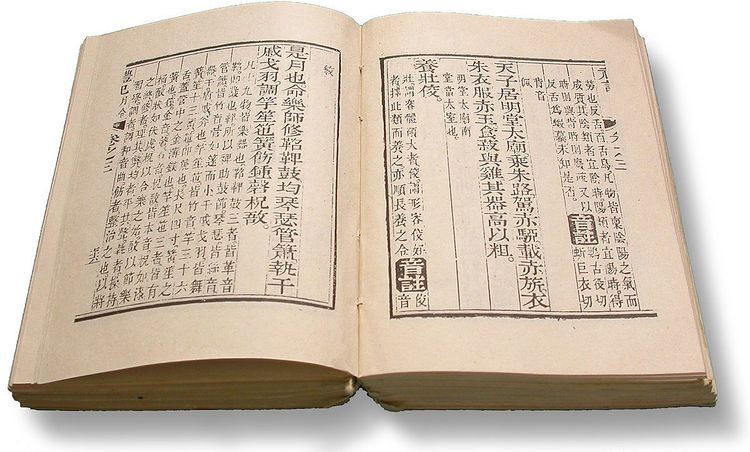 | ||
Nonsense verse is a form of nonsense literature usually employing strong prosodic elements like rhythm and rhyme. It is whimsical and humorous in tone and employs some of the techniques of nonsense literature.
Contents
Limericks are probably the best known form of nonsense verse, although they tend nowadays to be used for bawdy or straightforwardly humorous, rather than nonsensical, effect.
Among writers in English noted for nonsense verse are Edward Lear, Lewis Carroll, Mervyn Peake, Sukumar Ray, Edward Gorey, Colin West, Dr. Seuss, and Spike Milligan. The Martian Poets and Ivor Cutler are considered by some to be in the nonsense tradition.
Variants
In some cases, the humor of nonsense verse is based on the incompatibility of phrases which make grammatical sense but semantic nonsense at least in certain interpretations, as in the traditional:
'I see' said the blind man to his deaf and dumb daughteras he picked up his hammer and saw.Other nonsense verse makes use of nonsense words—words without a clear meaning or any meaning at all. Lewis Carroll and Edward Lear both made good use of this type of nonsense in some of their verse. These poems are well formed in terms of grammar and syntax, and each nonsense word is of a clear part of speech. The first verse of Lewis Carroll's Jabberwocky illustrates this nonsense technique, despite Humpty Dumpty's later explanation of some of the unclear words within it:
'Twas brillig, and the slithy tovesDid gyre and gimble in the wabe:All mimsy were the borogoves,And the mome raths outgrabe.Other nonsense verse uses muddled or ambiguous grammar as well as invented words, as in John Lennon's "The Faulty Bagnose":
The Mungle pilgriffs far awoyReligeorge too thee worled.Sam fells on the waysock-sideAnd somforbe on a gurled,With all her faulty bagnose!Here, awoy fills the place of "away" in the expression "far away", but also suggests the exclamation "ahoy", suitable to a voyage). Likewise, worled and gurled suggest "world" and "girl" but have the -ed form of a past-tense verb. "Somforbe" could possibly be a noun, possibly a slurred verb phrase. In the sense that it is a slurred verb, it could be the word "stumbled", as in Sam fell onto the drunk side and stumbled on a girl.
However, not all nonsense verse relies on word play. Some simply illustrate nonsensical situations. For instance, Edward Lear's poem, The Jumblies has a comprehensible chorus:
Far and few, far and few,Are the lands where the Jumblies live;Their heads are green, and their hands are blueAnd they went to sea in a sieve.However, the significance of the color of their heads and hands is not apparent and the verse appears to be nonsense.
Some nonsense verse simply presents contradictory or impossible scenarios in a matter-of-fact tone, like this example from Brian P. Cleary's "Rainbow Soup: Adventures in Poetry" (Millbrook Press, 2004):
One tall midget reached up high,Touched the ground above the sky,Tied his loafers, licked his tongue,And told about the bee he stung.He painted, then, an oval squareThe color of the bald man's hair,And in the painting you could hearWhat's undetected by the ear.Likewise, a poem by Christopher Isherwood from his Poems Past and Present (J.M. Dent and Sons (Canada) Ltd. fourth printing, 1959) makes grammatical and semantic sense and yet lies so earnestly and absurdly that it qualifies as complete nonsense:
The common cormorant or shagLays eggs inside a paper bagThe reason you will see no doubtIt is to keep the lightning outBut what these unobservant birdsHave failed to notice is that herdsOf wandering bears may come with bunsAnd steal the bags to hold the crumbs.More contemporary examples of nonsense verse are Vogon poetry, found in Douglas Adams's The Hitchhiker's Guide to the Galaxy or the 1972 song 'Prisencolinensinainciusol' by Italian multi-talent Adriano Celentano .
Usage
There is a long tradition of nonsense verse in English. The Anglo-Saxon riddles are an early form. For instance:
A moth ate some words – it seemed to mestrangely weird – when I heard this wonder:that it had devoured – the song of a man.A thief in the thickness of night – gloriously mouthedthe source of knowledge – but the thief was notthe least bit wiser – for the words in his mouth.The following poem makes even more extreme use of word incompatibility by pairing a number of polar opposites such as morning/night, paralyzed/walking, dry/drowned, lie/true, in conjunction with lesser incompatibilities such as swords/shot and rubber/wall.
One bright morning in the middle of the night,Two dead boys got up to fight.Back-to-back they faced one another,Drew their swords and shot each other.One was blind and the other couldn't see,So they chose a dummy for a referee.A blind man went to see fair play,A dumb man went to shout "hooray!"A deaf policeman heard the noise,And came and killed those two dead boys.A paralyzed donkey walking by,Kicked the copper in the eye,Sent him through a rubber wall,Into a dry ditch and drowned them all.(If you don't believe this lie is true,Ask the blind man – he saw it too!)Many nursery rhymes are nonsense if the context and background are not known. Some claim that Mother Goose rhymes were originally written to parody the aristocracy while appearing to be nothing more than nonsense nursery rhymes. One example is:
Hey diddle, diddle,The cat and the fiddle.The cow jumped over the moon.The little dog laughed to see such fun,And the dish ran away with the spoon.Other languages
Russian nonsense poets include Daniil Kharms and Aleksey Konstantinovich Tolstoy, particularly his work under the pseudonym Kozma Prutkov, and some French exponents are Charles Cros and Robert Desnos. The best-known Dutch Nonsense poet is Cees Buddingh'.
Among German nonsense writers, Christian Morgenstern and Ringelnatz are the most widely known, and are both still popular, while Robert Gernhardt is a contemporary example. Morgenstern's Das Nasobēm is an imaginary being like the Jabberwock, although less frightful:
The following observation by F.W. Bernstein has practically become a German proverb.
Among Indian writers, Bengali poet Sukumar Ray is widely known.
